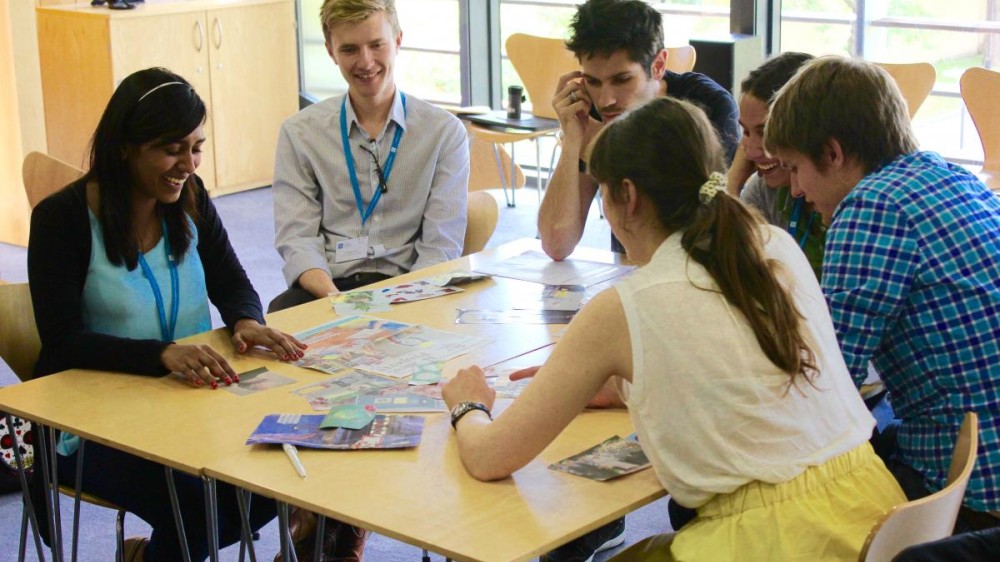Public engagement, outreach and communication of the 3Rs
The NC3Rs provides information to help scientific and public audiences understand how the 3Rs drive better science. We have always been transparent about our work and both the use and limitations of animals in research and testing, and encourage those we work with to do the same.
We have undertaken and funded a wide range of public engagement activities to communicate how the 3Rs supports both better animal welfare and better science. From science festivals to the first citizen science project for a laboratory animal topic and more, you can find some of our key highlights below.
If you are a scientist, technician or other professional working to advance the 3Rs, you can find guidance on communicating your work in our resource library.
Contents
Science festivals and events
The opportunity to meet scientists working to advance the 3Rs gives public audiences a unique insight into the world of research. For our staff and grant holders, speaking directly to the public at events and science festivals brings a fresh perspective to their work and motivates our mission to pioneer better science.
Pint of Science
We have showcased 3Rs projects from 50 speakers to nearly 1,000 Pint of Science attendees since 2014. As the longest running sponsor of the annual science festival, over the last ten years we have hosted 25 events in cities across the UK including Birmingham, Cambridge, Edinburgh, Leeds, London, Manchester, Newcastle and Nottingham.
The Pint of Science format has proved a particularly good opportunity for NC3Rs-funded early career researchers to get involved in public engagement and build their communication skills. Feedback from attendees and speakers has been highly positive and the events are a great way for members of the public to engage with research in a friendly and informal setting.
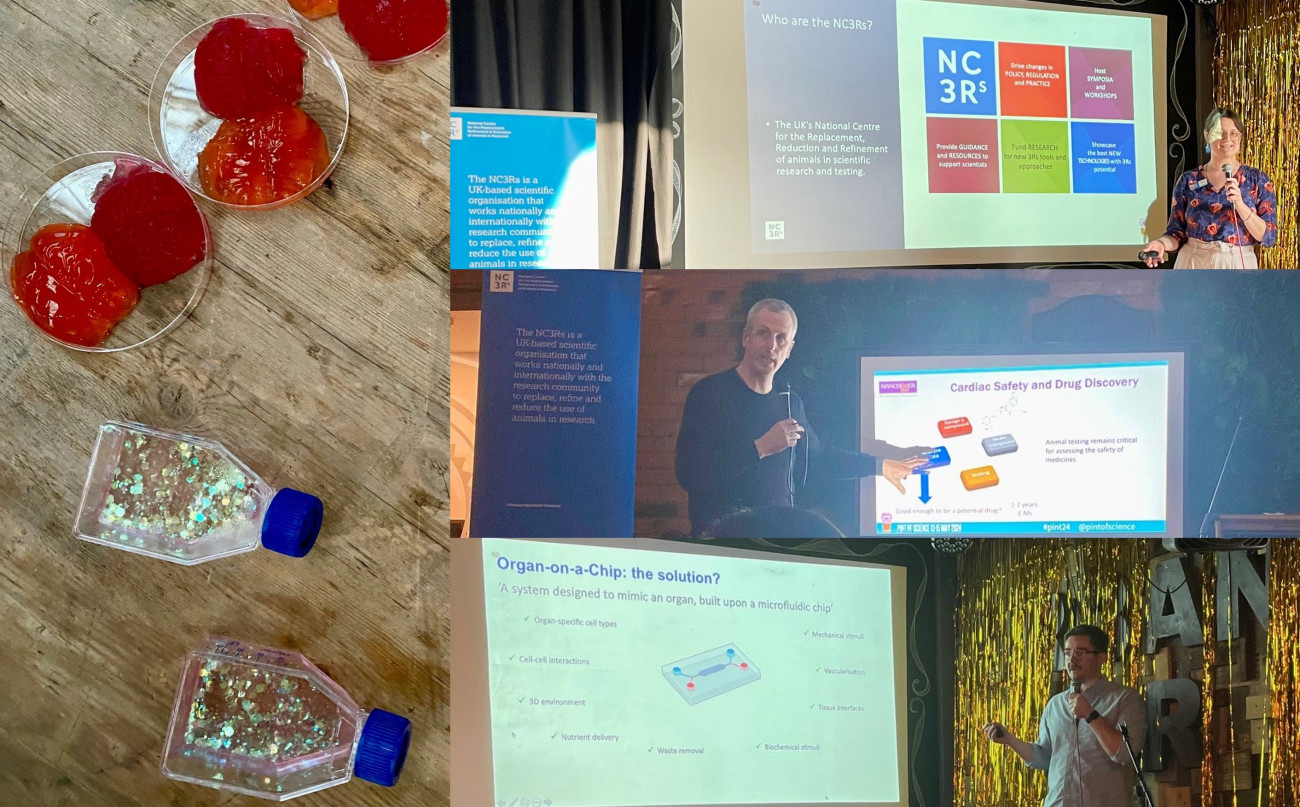
Other events
An audience of 100 attendees joined us at the 2009 Cheltenham Science Festival. New Scientist and the NC3Rs held a joint event to debate the use of alternatives to animal research over the next 50 years, including a presentation from science fiction author, Dr Paul McAuley.
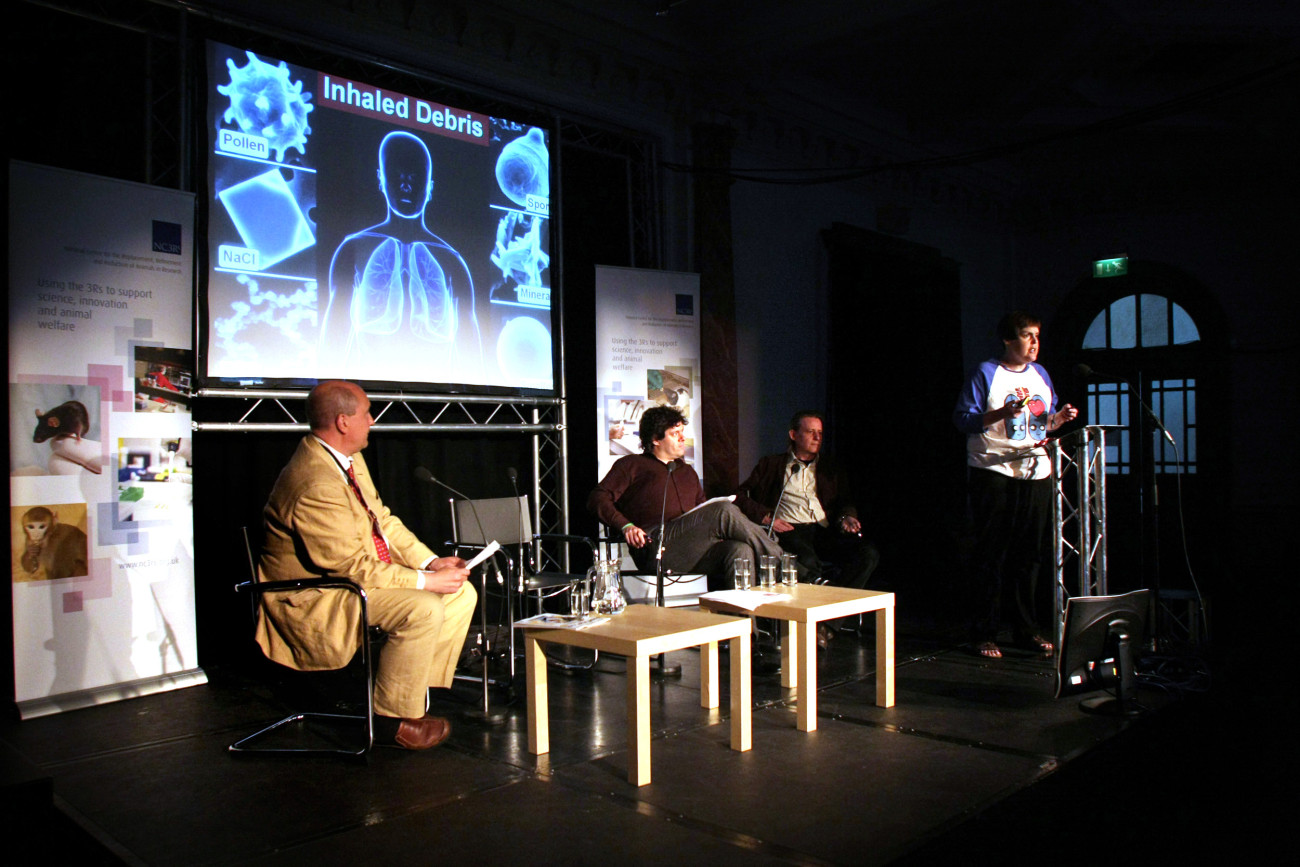
Big Brother: Keeping a watchful eye on animal
behaviour (2014)
Chaired by our Chief Executive Dr Vicky Robinson, our session showcased three NC3Rs grant holders who presented the latest video technologies to monitor and evaluate animal welfare. Dr Sara Wells discussed progress on the Rodent Little Brother CRACK IT Challenge to remotely assess activity, behaviour and interaction of mice in their home cages, Dr Lynne Sneddon detailed her work tracking zebrafish behaviour in their home tanks, and Dr Matt Leach explained how you can use facial expressions to understand and monitor pain in animals.
Dish and chips: New alternatives to animal
testing (2015)
Visitors to the British Science Festival in 2016 saw real-life laboratory examples up close and personal. Chaired by Professor Jamie Davies, audience members had the chance to examine the slime mould Dictyostelium used by Professor Robin Williams to replace animals in research on epilepsy, asthma and nausea and vomiting, alongside unique scaffolds used by Professor Christine Watson to model breast tissue and organ-on-chips from Professor John Greenman which are both used in cancer research.

As part of 2016 Biology Week, we held a panel discussion at the British Library to enable dialogue between researchers and the public. There were plenty of audience questions for active involvement and engagement. Chaired by our then Board Chair Professor Sir Stephen Holgate, the panel included researchers from academia and industry.

We have held four events in parliament to launch key documents and showcase 3Rs projects. Our parliamentary events have provided opportunities to engage with MPs, Peers and policy makers specifically on the work of the NC3Rs as well as 3Rs projects from across the scientific community. We held two events in 2007 and 2009, hosted by Phil Willis MP and Lord Sainsbury respectively showcasing over 80 3Rs projects in total. Our 2012 event sponsored by Lord Willetts launched our framework for evaluating 3Rs impacts, and in 2014 we returned to launch our report detailing ten years of working with the pharmaceutical industry.
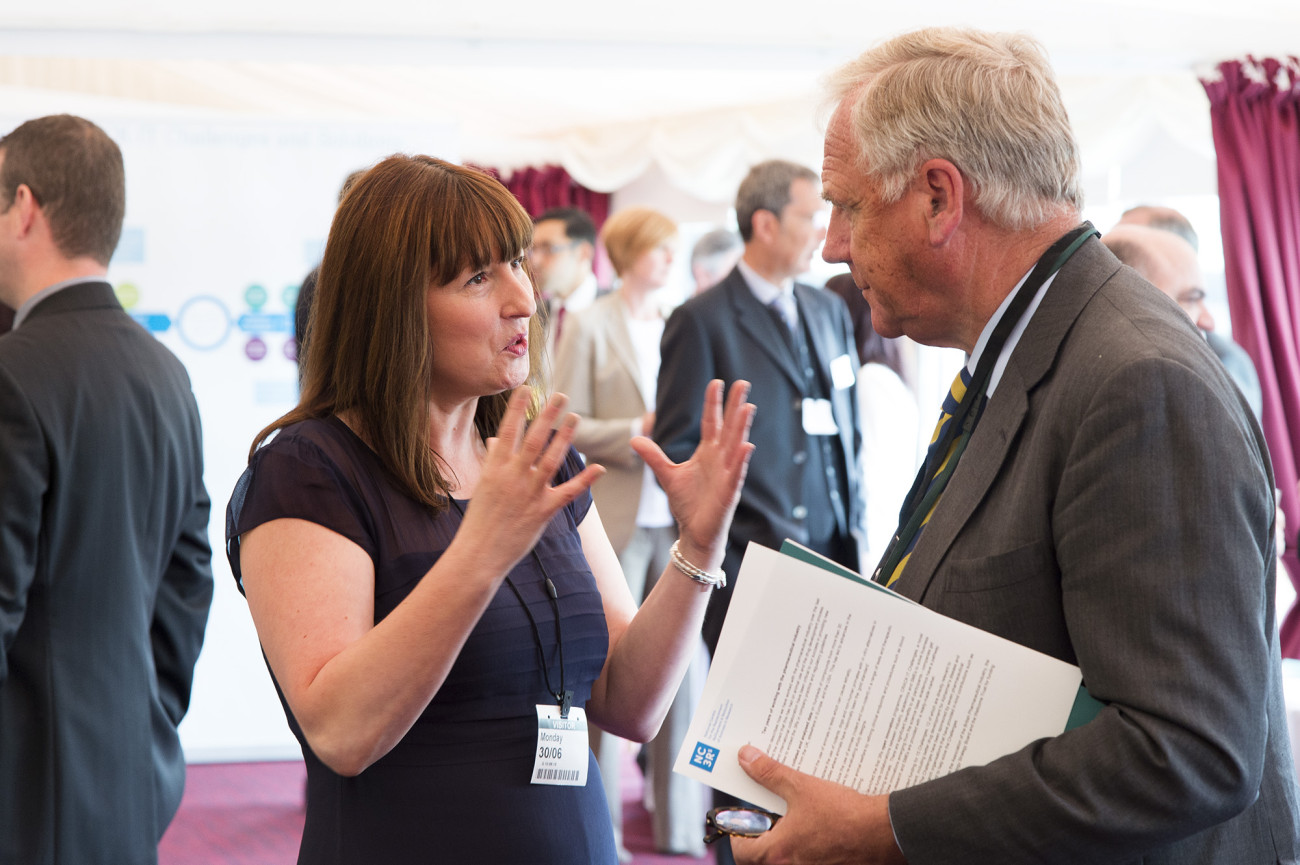
Outreach and public involvement
We are keen to invite patients, students and the wider public to be involved in research and connect with scientists. Our outreach and public involvement activities build trust and maintain transparency in the research process and aim to inspire the next generation of scientists.
I'm a scientist – get me out of here!
We support I’m a Scientist, a student-led STEM activity that connects school students and teachers with scientists through real-time text-based chats. The instant messaging style allows children all around the country to meet our staff and ask questions about about working in science, animal research and the 3Rs.
Teachers can sign up to take part or find out more on the I'm a scientist website.
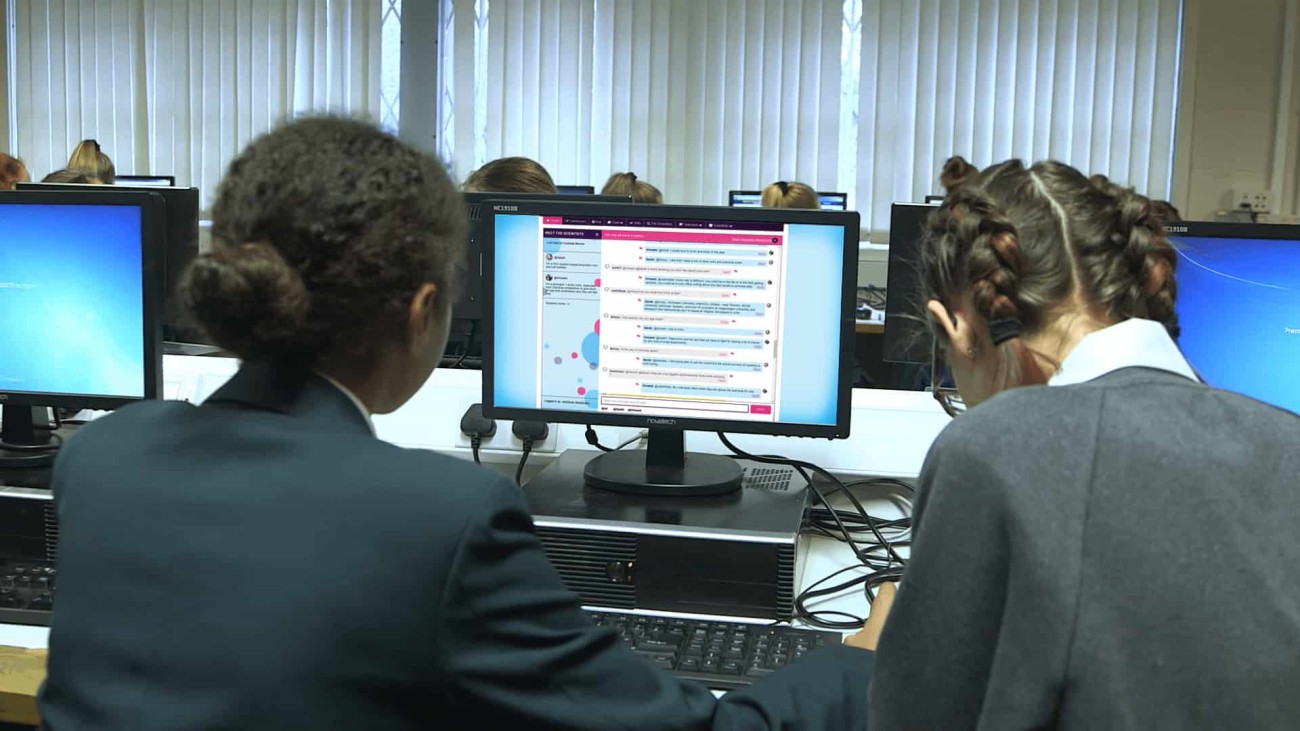
Other activities
In 2019 we ran the first citizen science project for a laboratory animal topic. The Secret Lives of Mice project, a collaboration between the NC3Rs and colleagues at MRC Harwell, involved members of the public identifying and annotating different behaviours in short video clips of mice. Footage was recorded through the Home Cage Analyser system developed through the Rodent Little Brother CRACK IT Challenge as a non-invasive approach to assess the impact of scientific interventions on animal behaviour and welfare.
Hosted on the Zooniverse platform, the project was highly successful with more than 7,000 volunteers (including a strong uptake by teachers and schools) and 68,800 behavioural events classified. The information obtained trained computer algorithms to make the system more accurate and efficient.
The project was recognised in the Understanding Animal Research Annual Openness Awards in 2020.

120 writers from around the world entered our 'Beyond Animal Research' essay competition with New Scientist. To mark the 50th anniversary of the 3Rs in 2009 we challenged writers to let their imagination run wild and think about novel ways to replace animals in research. The winner, ‘Your virtual twin’ by Natalia Alexandrov, a researcher at NASA’s Langley Research Centre, introduced us to the world of 2050, when computer-generated twins are created for every baby to test drugs and detect long-term health issues. The judging panel included Professor Lewis Wolpert, Professor Dame Nancy Rothwell, Professor Ian Kimber (at the time NC3Rs Board Chair) and Jeremy Webb.
Public engagement awards
Our public engagement awards support scientists to share 3Rs research, advances and impacts with school children, undergraduate students, patients and the wider public. Since the scheme launched in 2014, we have awarded a total of £34k for a wide range of imaginative activities and events. Initially open to NC3Rs-funded scientists, to mark our 20-year anniversary in 2024 we opened the awards to anyone working to advance the 3Rs, regardless of their role or funder.
Read more about the awards and projects we have funded in our blog: Public engagement with the 3Rs.
The media, editorials and articles
The news media remains the most common way for the public to stay up to date with advances in scientific research (Science Media Centre, 2023). Our staff have provided expert opinion on news items and written several articles and editorials to explore 3Rs topics with wider audiences, from mass media to learned societies.
Some of these include:
- Dr Anthony Holmes, our Director of Science and Technology, spoke to the Daily Mail in December 2024 about approaches to replace animal use in drug development, such as organoids and AI, alongside the importance of robust experimental design for experiments that involve animals.
- Our most recent appearance on the Radio 4 Today programme in February 2024 featured our Head of Toxicology Dr Fiona Sewell discussing our ambitious project to replace the use of dogs in the testing of new medicines with a virtual model.
- As part of our 20-year anniversary celebrations we published an article in the Genetics Society magazine that explores the evolving relationship between genetic modification and the 3Rs over the past two decades.
- We have written several feature articles for the Royal Society of Biology's magazine, The Biologist:
- 2024: Ethical, impactful and better science.
- 2022: The road to replacement.
- 2020: 3Rs Prize winners.
- 2019: NC3Rs Research Review.
- In 2010 NC3Rs Chief Executive Dr Vicky Robinson wrote an editorial article ‘Make every animal experiment count’ for New Scientist discussing our launch of the ARRIVE guidelines, a checklist of recommendations for the full and transparent reporting of animal experiments.
- Also in 2010, Vicky contributed to a 'Fight club' article in The Times, discussing 3Rs advances and innovation driven by the NC3Rs to reduce the reliance on animal use in scientific research and testing.
Information on the 3Rs alongside articles, videos and other resources aimed at a more general audience.
